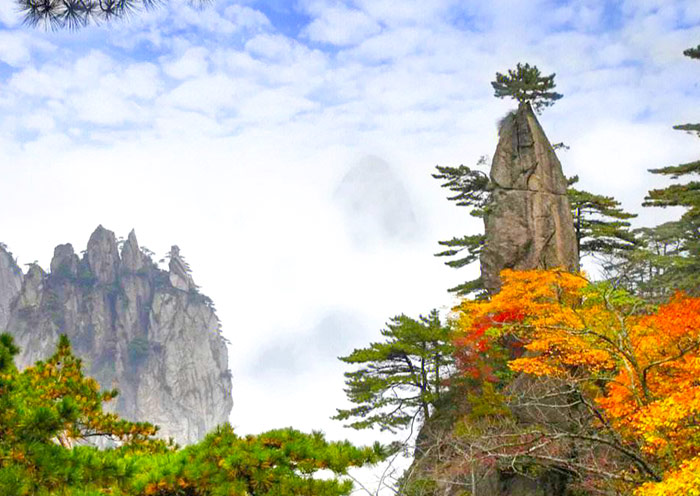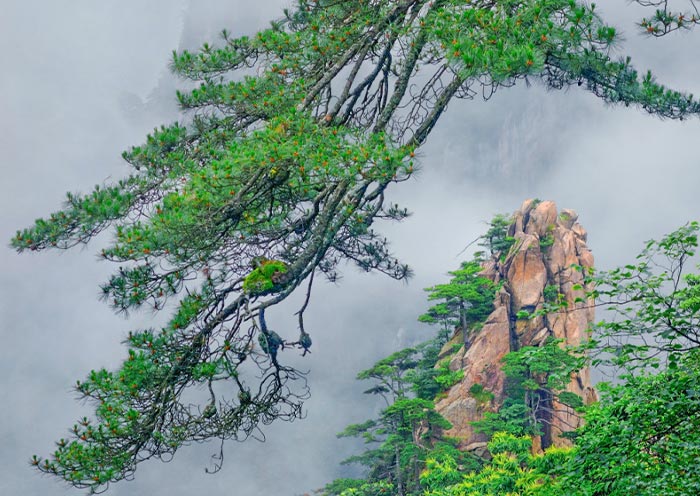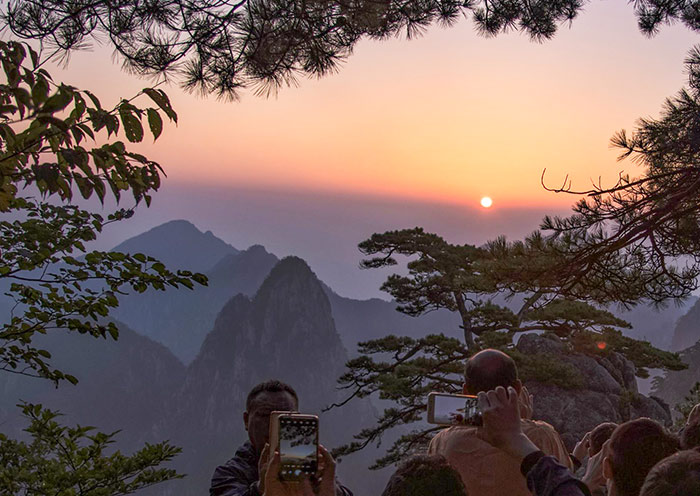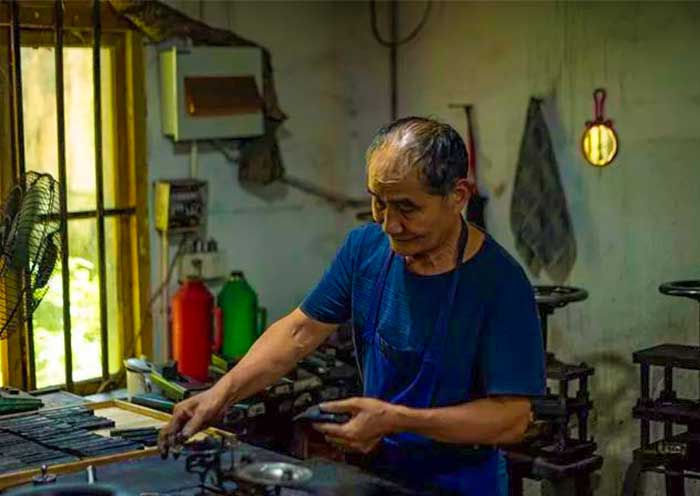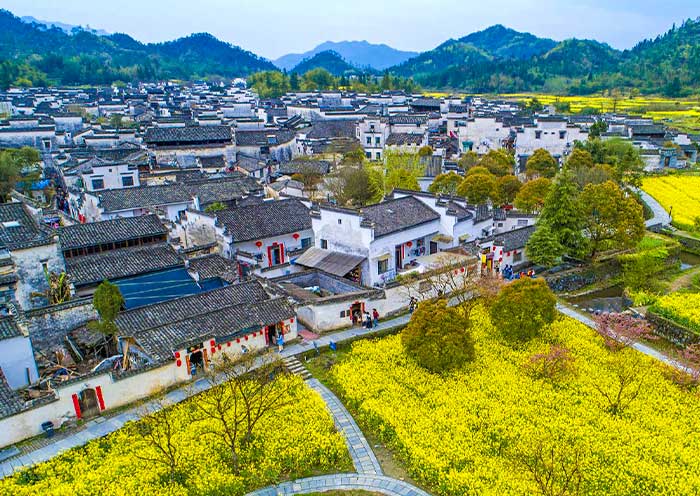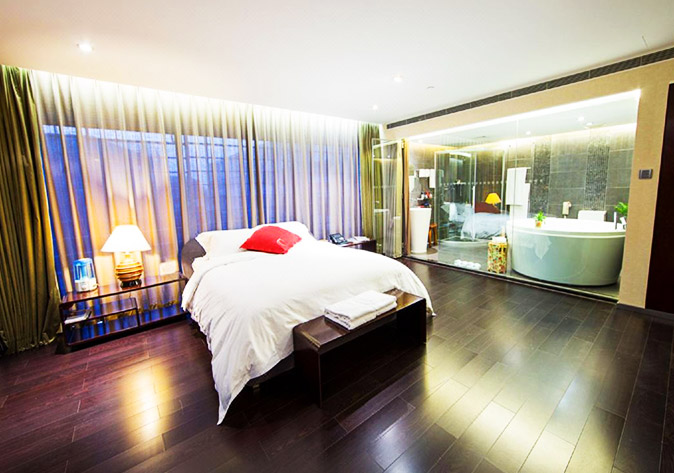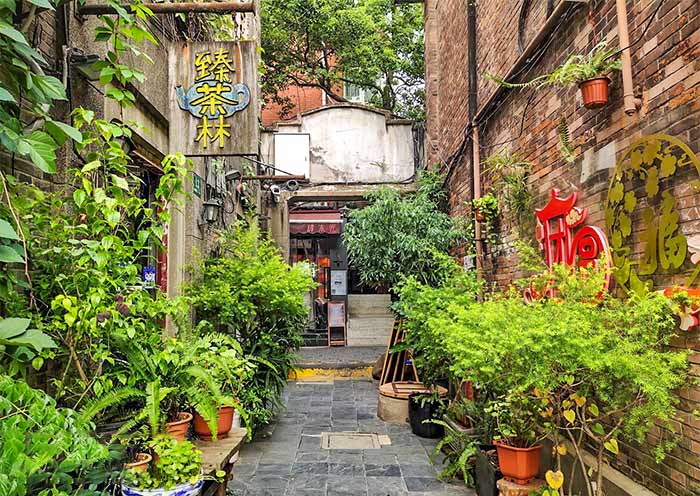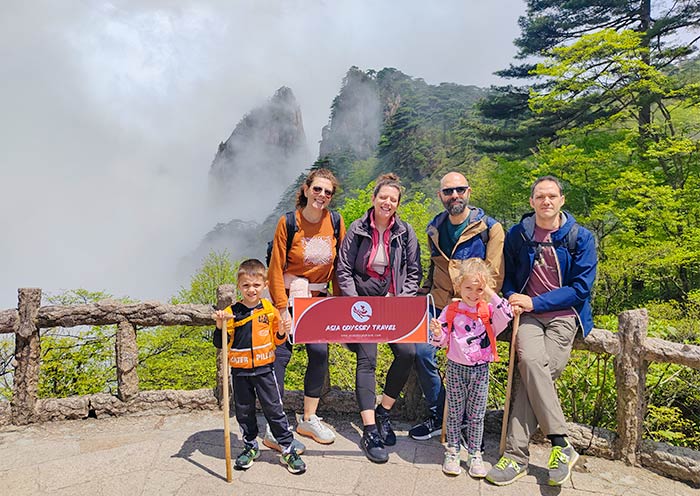After breakfast, you be picked you up at your hotel at your hotel by guide and prepare to embark on a journey through time. Today, accompanied by your knowledgeable guide, you'll meander through two of China's most iconic ancient villages: Hongcun and Xidi, capturing the very essence of ancient Huizhou culture. These villages are the best examples of ancient Hui-style architecture and were inscribed as UNESCO World Heritage Sites in 2000 as part of the "Ancient Villages in Southern Anhui" World Heritage Site.
There are many ancient villages in China, while the ancient villages in southern Anhui have their own unique tradition. The ancient villages in southern Anhui are predominantly designed in the Huizhou architectural style, a school of design that showcases intricate wood carvings, walls of pristine white, and roofs of contrasting black tiles. The “Horsehead” walls, named for their shape, are another characteristic feature. These architectural elements come together to create scenes that seem plucked right from a traditional Chinese ink painting- serene, timeless, and profoundly beautiful. Huizhou villages often have a rich history tied to the Huizhou merchants, one of the three major commercial groups in ancient China, especially successful during the Ming and Qing Dynasties. Upon amassing wealth, they often returned to their hometowns to build luxurious mansions, ancestral halls, and archways, contributing to the family-residing village's architectural and cultural richness.
Hongcun Village - A Village in a Chinese Painting
Today, you will first visit Hongcun Village. It is renowned for its well-preserved ancient architecture and layout from the Ming and Qing Dynasties. Often described as a "village in a Chinese painting," Hongcun has become a magnet for photographers and artists, eager to capture its idyllic scenery and architectural grace.
Established in the Song Dynasty, Hongcun Village is over 900 years old. The lay of the Hongcun was remodeled according to geomantic (feng shui) ideas. It is common to see Hui-style villages often situated near mountains and water sources, aligning with the people Huizhou’s belief that harmony with the natural environment promotes the well-being and prosperity of the villagers. In the embrace of southern Anhui's rolling hills, Hongcun unfolds like a living ox-shaped tapestry. Leigang Hill forms its majestic “head,” crowned by two ancient trees as “horns.” The Moon Pond forms its “heart”, and South Lake is the “belly.” Four timeworn bridges stand as the ox's “feet,” t, straddling the tranquil Jiyin stream, while a meandering canal - the village's “intestines” - adds a flowing cadence to daily life. All these elements converge at the serene South Lake, a natural mirror that not only reflects the village's ethereal beauty but also anchors its feng shui harmony.
Step inside and you are led through labyrinthine cobblestone streets, meandering like poetic verses. These lanes, narrow yet inviting, seem to whisper the stories of generations past as they guide you through the village's “body,” a collection of white-walled, black-tiled Hui-style buildings. Here, 103 ancient buildings from the Ming and Qing dynasties, and 34 buildings from the Republican era are preserved. The villagers uphold time-honored traditions and customs, living a pastoral life that feels as if suspended in another era. The most beautiful sites are the expansive South Lake and the crescent-shaped Moon Pond. These tranquil bodies of water act as natural mirrors, capturing the timeless beauty of ancient bridges and classic Huizhou architecture as if they were scenes on a painted scroll. It is especially beautiful during the season when lotus flowers are in full bloom.
The ancient inhabitants of this village have left a rich legacy of material and spiritual wealth. On the north bank of Southern Lake, you will find South Lake Academy, a private ancient school that served the village, and was a good architectural representative of the family academies of Huizhou. Scattered throughout the village are several mansions, courtyards, and ancestral halls, such as Chengzhi Hall, Wang Ancestral Hall, Jingxiu Hall, Jingde Hall, and Lexu Hall. Among these, the Wang Ancestral Hall stands as the largest and most well-preserved family shrine in the village. A portrait of the Wang family's grand matriarch hangs on the left wall inside the hall - Hu Zhong who designed and led the construction of Hongcun's water management system, shaping the village into what it is today. Chengzhi Hall, founded by a salt merchant, is the largest private residence in Hongcun and is often referred to as the "Folk Forbidden City." The mansion is renowned for its intricate Huizhou "Three Carvings," which include brick carvings, wood carvings, and stone carvings. Among these, the wood carvings are particularly exceptional. Some are even gilded, exuding magnificence and opulence that testify to the wealth and prestige of its original owners.
Xidi Village - A Tapestry of History and Ancient Architecture
Next, your journey will take you to Xidi Village, which is located near Hongcun. However, Xidi offers a less crowded, more tranquil, and decidedly authentic experience compared to Hongcun. With its rich 970-year history, Xidi is an even older village. Boasting over 300 ancient residences, three ancestral halls, and a strikingly ornate archway, the village is rightly celebrated as a "Living Museum of Ming and Qing Residential Houses." For enthusiasts of Chinese architecture and history, particularly that of the Huizhou region, Xidi is an unmissable stop on your itinerary.
The ascent of the village was closely intertwined with the fortunes of the Hu family. Founded in AD 1047, Xidi has served as a stronghold for the Hu clan for several centuries. This family traces its lineage back to the eldest son of the last Tang Emperor, who sought refuge here during the waning years of the Tang Dynasty. A grandiose three-tiered Ming Dynasty decorative arch, known as the Hu Wenguang Memorial Archway (胡文光牌楼), stands at the entrance of the village as an ostentatious testament to Xidi's historical significance. The Da Fu Grand House (大夫第), located on the main street of Xidi Village, is an old residence of the Hu family.
For nearly a millennium, Xidi has been the birthplace of numerous influential merchants, scholars, and politicians. In Xidi, you have the opportunity to explore a rich tapestry of architectural and cultural sites. These aren't just limited to the grand mansions erected by wealthy merchants. The village is also replete with private academies, modest residences, gardens, and ancestral halls, built by officials and scholars of yesteryears. For example, Ling Yun Pavilion (凌云阁) was the study room of Hu Shihui, a scholar during the Qing Dynasty. Xu Guo Stone Archway (许国石坊)honors Xu Guo, a minister during the Ming Dynasty. Each building has its own unique characteristics and historical narratives, for instance, carved lions often appear in the homes of officials, symbolizing authority, while peonies, representing wealth, are more commonly found in the homes of merchants.
The layout of Xidi village is also built according to the ancient Chinese practice of Feng Shui. The village takes the shape of a boat, with mountains surrounding it on all four sides. Two streams run through the northern and eastern parts of the village, converging at Huiyuan Bridge in the south. The primary backbone of the village consists of one longitudinal street and two streams, forming a road system that mainly extends to the east and stretches out to the north and south.
As you wander through the cobblestone lanes, numerous architectural gems beckon for closer inspection. Diji Hall (迪吉堂) and Zhuimu Hall (追慕堂) on Dalu Street (大路街) are both masterpieces that showcase the intricate craftsmanship of the region. Jing’ai Hall (敬爱堂) stands as the largest edifice in town, a multipurpose hall steeped in history; it was a venue for weddings, clan meetings, and even dispensing community justice, though it's worth noting that historically, women were not permitted entry. For those interested in more delicate artistry, Xiyuan (西园) is a small residence that boasts dual-sided, exquisite stone carvings on its windows. Notably, many of these ancient buildings still serve as homes, offering visitors a living glimpse into this enduring culture. Strolling through Xidi feels like stepping back in time, where every architectural element and every carving has a tale to tell. The village stands as a living testament to the mastery and sophistication of ancient Chinese architecture and culture. You can not help but marvel at the ingenuity and artistry of the craftsmen and builders of yesteryears.
As the day comes to an end and we accompany you to the train station or airport, we hope that the memories of these ancient villages and Yellow Mountain will stay with you, like the soft melodies of an old song, resonating in your mind on the journey back.
Thank you for choosing Asia Odyssey Travel for your China tour, and we are always here working for you and hope to see you again for your next trip to China/Asia. Safe journey!

















